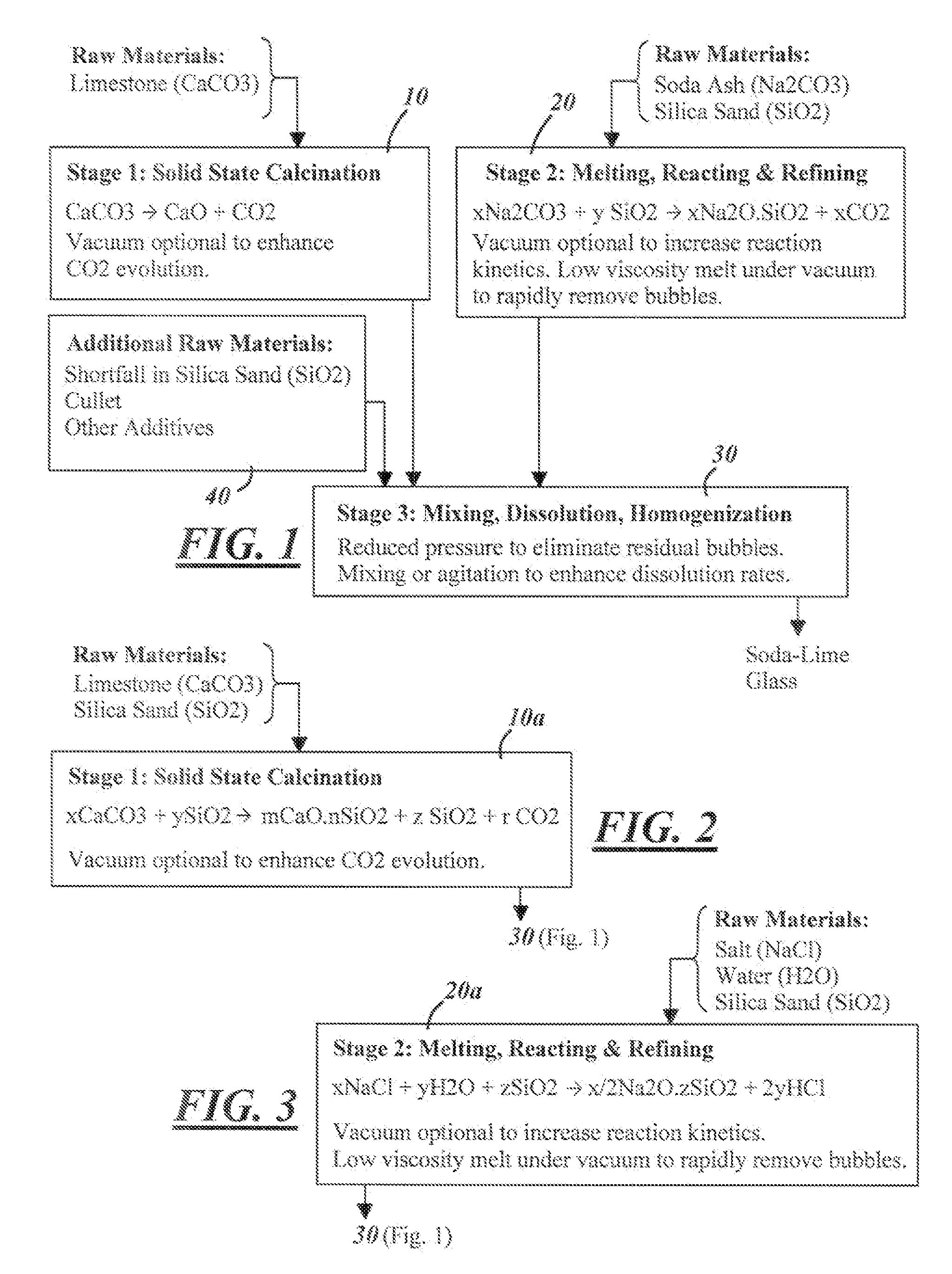Process for Melting and Refining Soda-Lime Glass
- Summary
- Abstract
- Description
- Claims
- Application Information
AI Technical Summary
Benefits of technology
Problems solved by technology
Method used
Image
Examples
Embodiment Construction
[0011]FIG. 1 illustrates a process for making soda-lime glass, also called soda-lime-silica glass, in accordance with one exemplary embodiment of the disclosure. A first stage 10 of the process involves solid state (solid phase) calcination of raw materials. In one embodiment, calcium carbonate (CaCO3) is input, such as in the form of limestone, and heated to release carbon dioxide (CO2). This step may be carried out at a temperature of about 800° C. to about 1300° C. In a second embodiment 10a in FIG. 2, the solubility of the calcinated product in the final mixing stage can be improved by calcination in the presence of silica (SiO2) to form at least some calcium silicate (CaO—SiO2), which is more readily dissolved at the mixing stage. This calcination stage 10 or 10a can be carried out at reduced pressure (vacuum) to enhance release of carbon dioxide.
[0012]A second stage of the process involves melting, reacting and refining input materials and production of sodium silicate glass i...
PUM
| Property | Measurement | Unit |
|---|---|---|
| Temperature | aaaaa | aaaaa |
| Temperature | aaaaa | aaaaa |
| Temperature | aaaaa | aaaaa |
Abstract
Description
Claims
Application Information
 Login to View More
Login to View More - R&D
- Intellectual Property
- Life Sciences
- Materials
- Tech Scout
- Unparalleled Data Quality
- Higher Quality Content
- 60% Fewer Hallucinations
Browse by: Latest US Patents, China's latest patents, Technical Efficacy Thesaurus, Application Domain, Technology Topic, Popular Technical Reports.
© 2025 PatSnap. All rights reserved.Legal|Privacy policy|Modern Slavery Act Transparency Statement|Sitemap|About US| Contact US: help@patsnap.com

